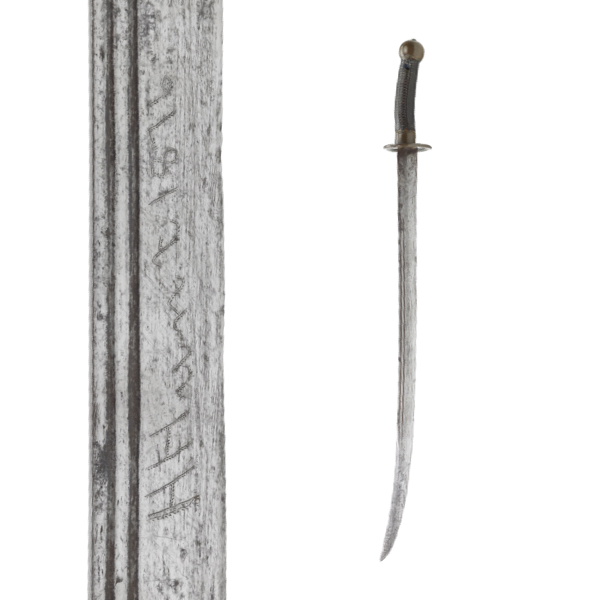
Chinese military saber marked 1876
Southern Chinese officer style saber with later inscription H.Hunt 1876.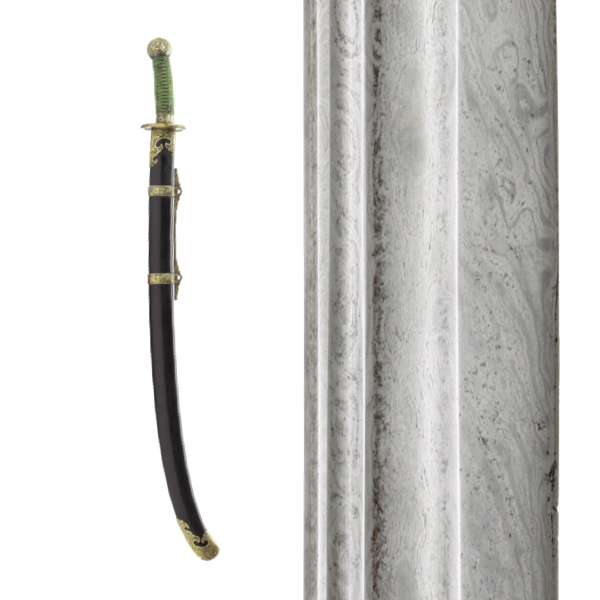
Qing twistcore peidao
A fine twistcore blade in standard pattern Qing military mounts.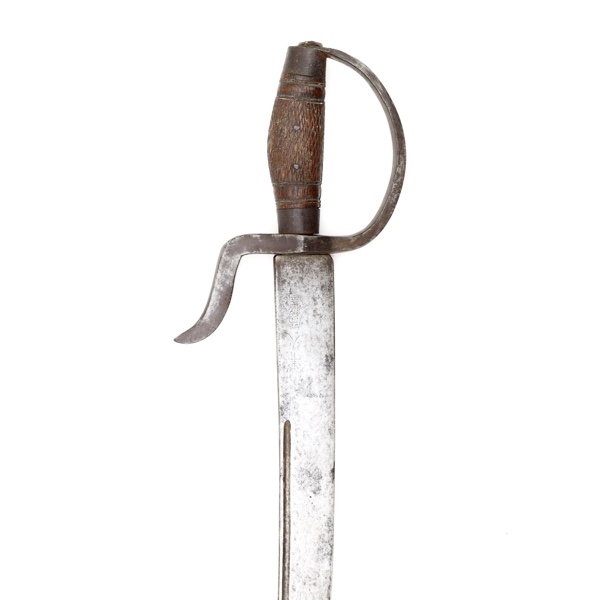
Jūn Huǒ Jú-made saber
Produced in the ordnance factory in Zengbu, near Guangzhou.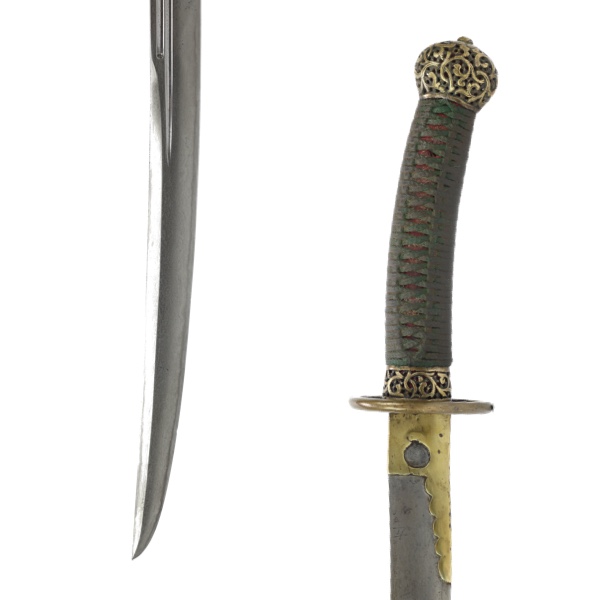
Liuyedao with very good blade
Description
This Chinese liǔyèdāo is an excellent example of Chinese bladesmithing at its best.
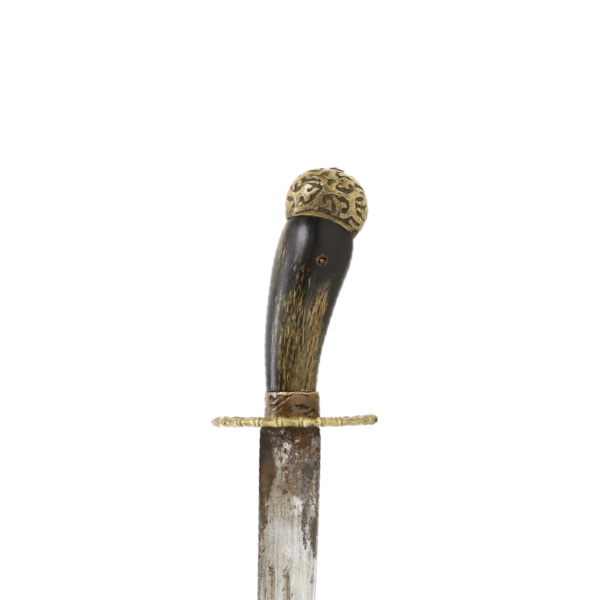
Cantonese saber
With brass mounts and ray skin covered scabbard.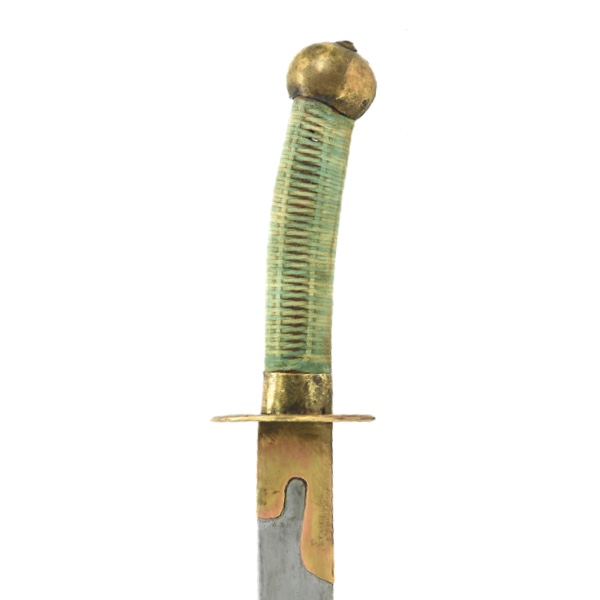
Southern Chinese saber
Of typical southern form with a very slender, pointy blade.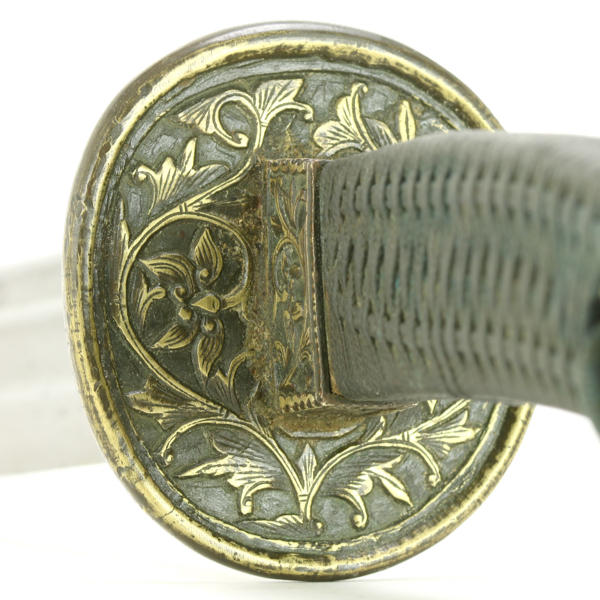
Fangshi officer's saber
With a good blade and a set of fittings that exceed the quality of most of this period.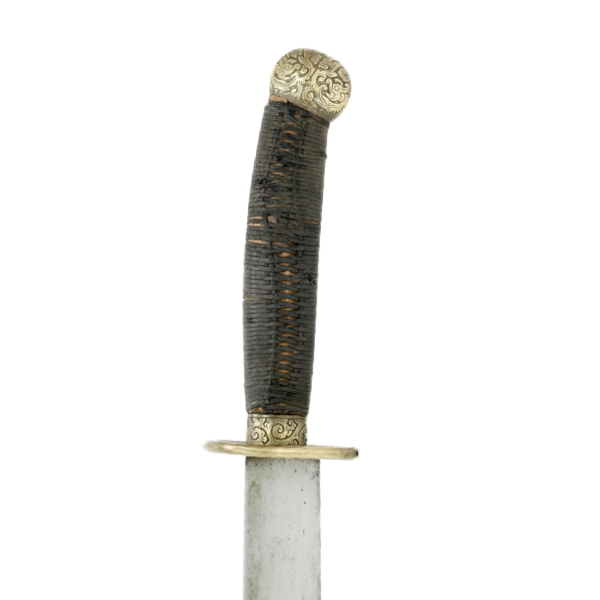
Large Southern Chinese saber
Built around a beautifully forged blade, in full polish, revealing a burl grain pattern.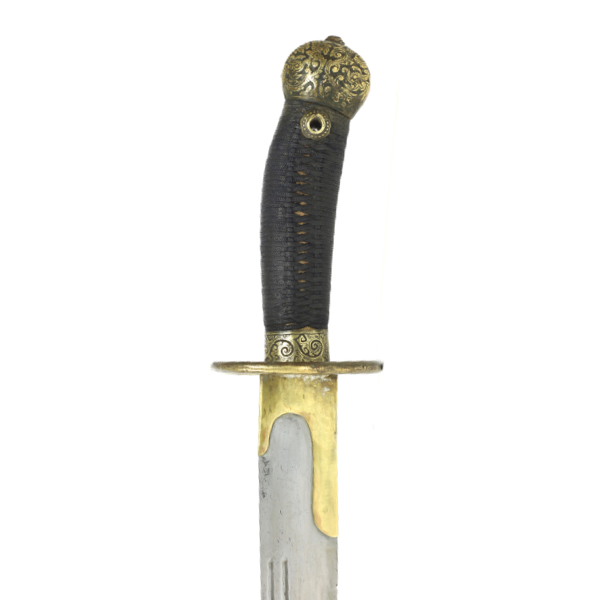
Late Qing southern saber
With differential heat-treatment, creating a cloudy crystalline effect along the edge.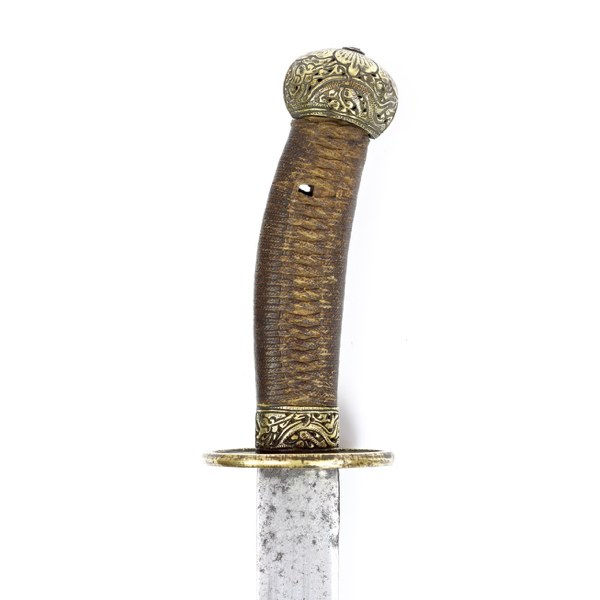
Excellent Qing officer saber
Introduction
The yaodao, literally "waist saber" was the standard side-arm for the Qing dynas
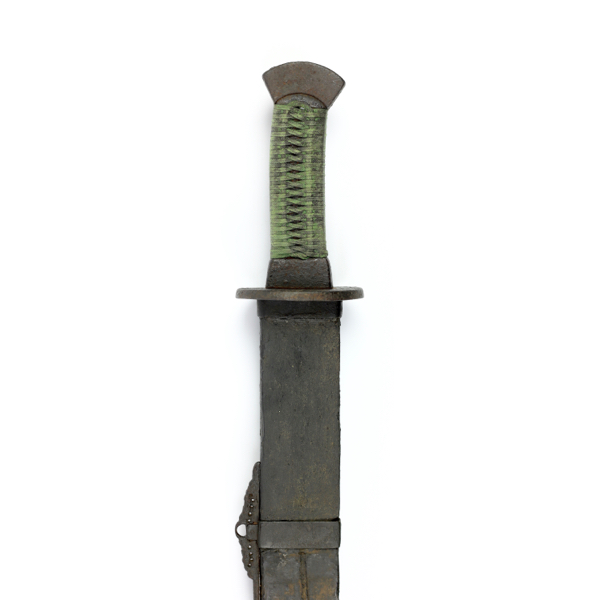
Peidao in iron fangshi mounts
Introduction
The terms peidao or yaodao are synonyms that were in use simultaneously in Q
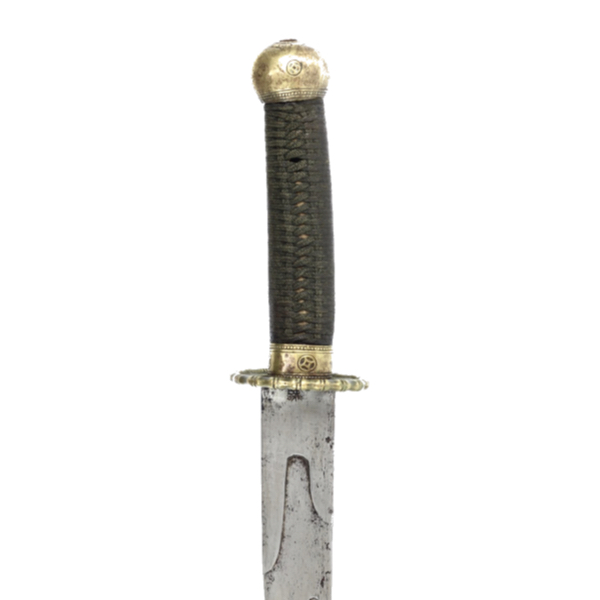
Southern Chinese saber
Introduction
The yaodao, literally "waist saber" was the standard side-arm for the Qing dynas
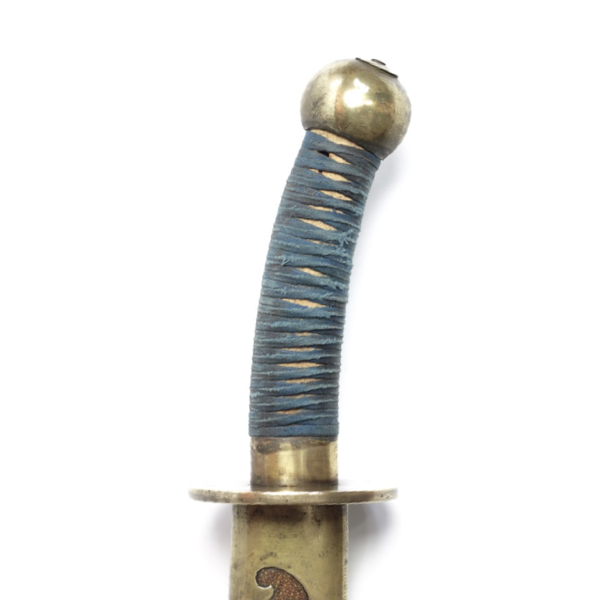
19th century Qing military saber
With massive 10mm thick blade with strong distal taper.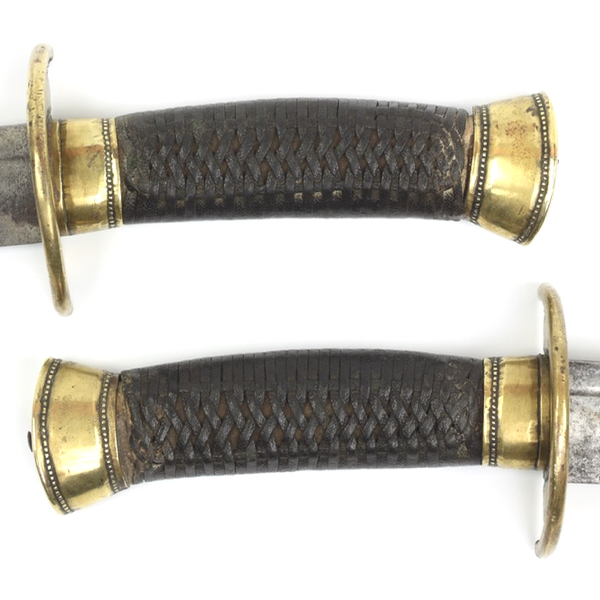
Chinese shuangdao - double sabers
With narrow liuyedao blades of moderate curvature.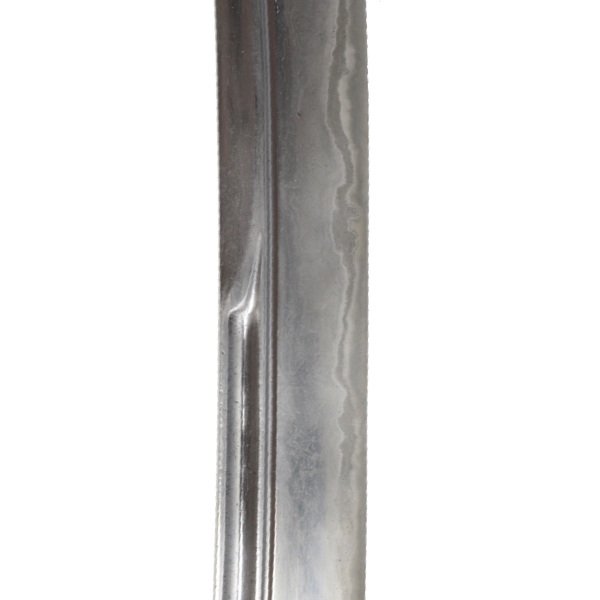
Chinese saber with "naginata-hi"
A Chinese waist saber or yaodao / peidao of the first half of the 18th century.
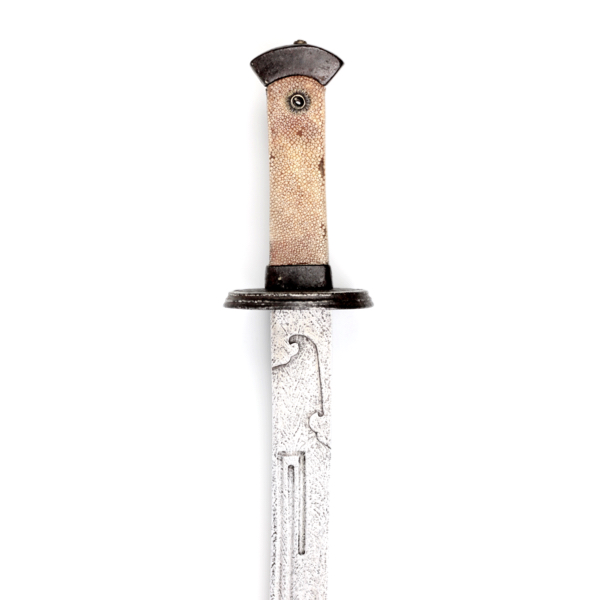
Chinese saber with U-grooves
With twist-core steel and of early liuyedao form. Probably 17th century.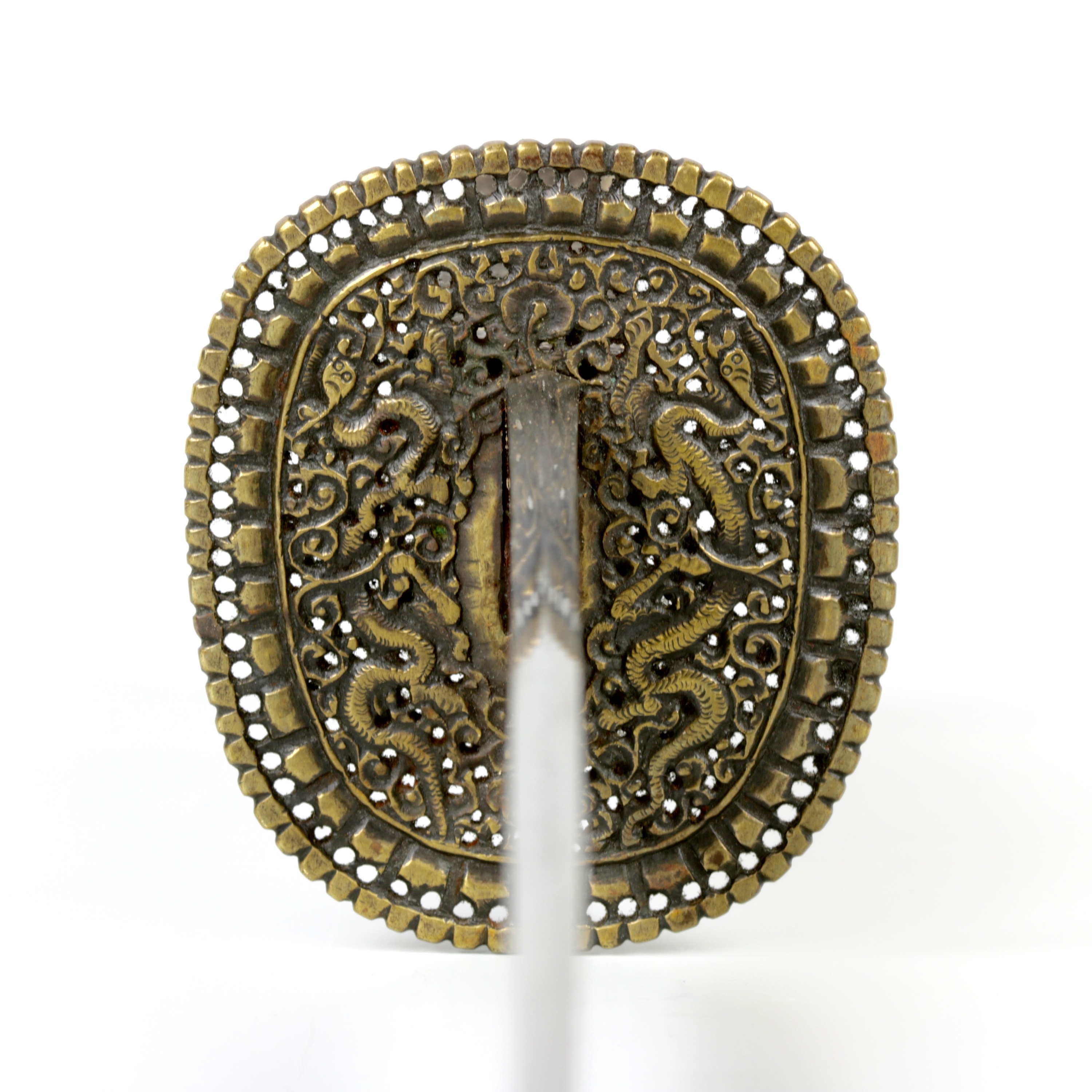
Chinese saber with segmented grooves
With openwork brass mounts in early imperial style.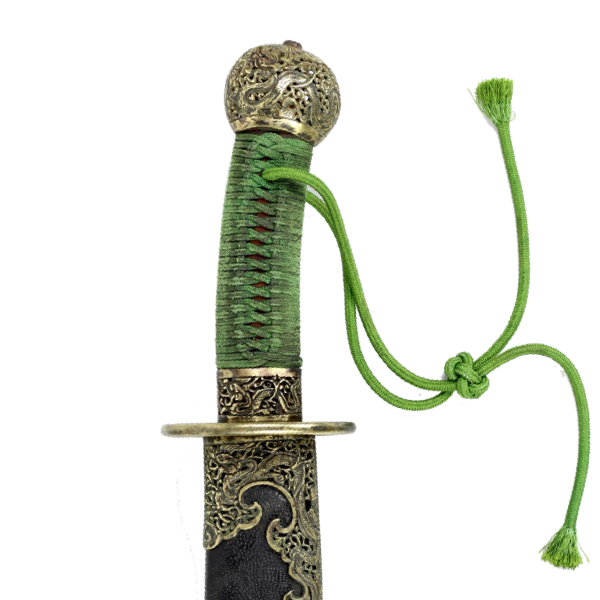
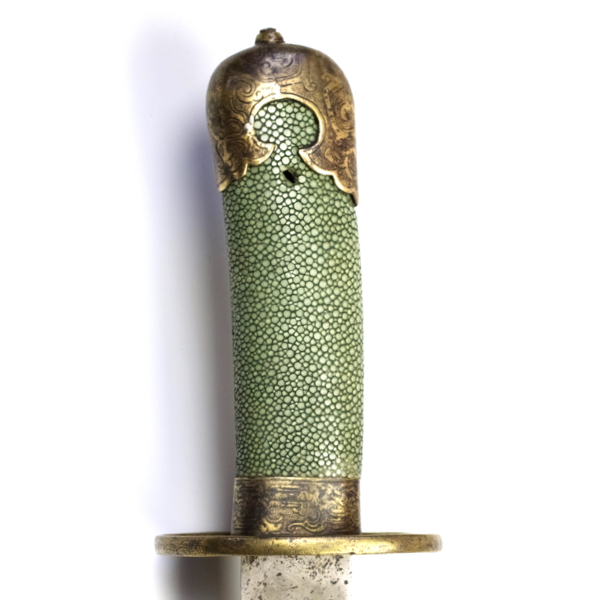
Rare Chinese twistcore saber
Background
Most Chinese swords and sabers are made with a hard high carbon steel edge plate sandwich
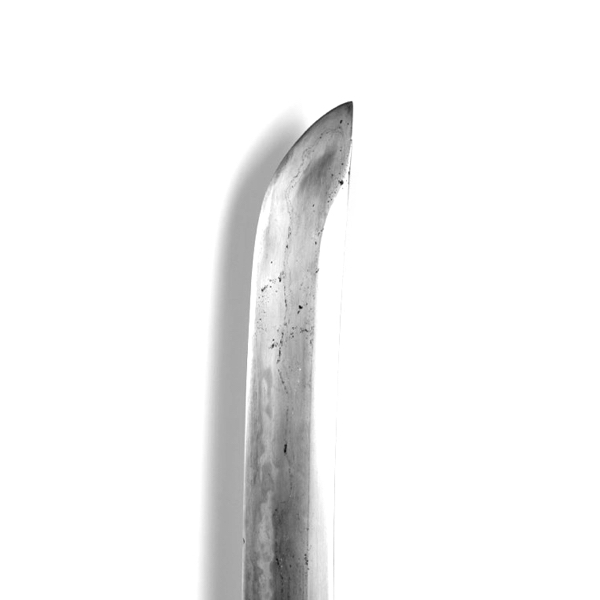
A Chinese woyaodao
Introduction
The ridged and facetted blade shape that is so well known nowadays from Japane
